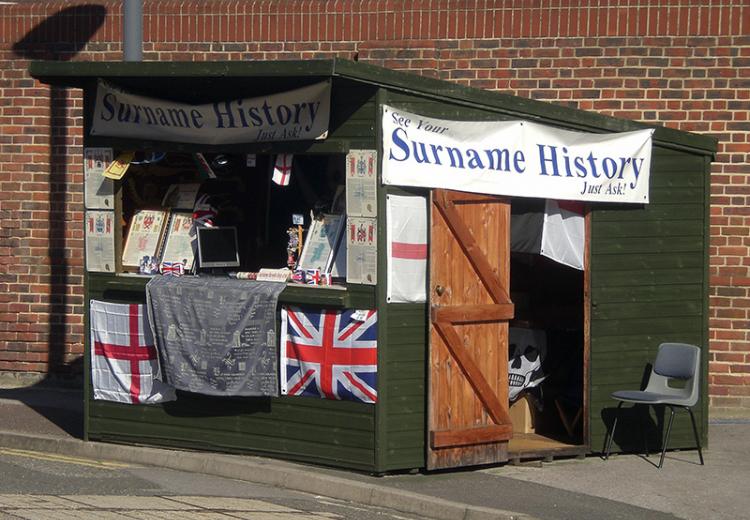Lesson 1: How Did Surnames Come to Be?

A stand at Portsmouth Historic Dockyard offering information on surname history.
During the Middle Ages, the feudal system meant that most people in Europe lived in small farming villages. As the population expanded and the towns grew, however, a need arose to find ways to differentiate between two people who shared the same first name.
Because the British were among the first Europeans to settle in North America, many modern American surnames can be traced back to medieval England, Scotland, Ireland, and Wales. Common adjectives used as bynames often referred to size - such as Little, Short, or Long—or to hair color or complexion—such as White, Black, or Red (which evolved into Reed). Sometimes, an adjective was combined with a noun to form a byname, like Longfellow or Blackbeard. Names such as Stern and Stout (meaning stout-hearted, not fat) described temperament, while Drinkwater implied someone with a powerful thirst. John Peacock must have been rather vain! A name might also refer to social status, such as Squire, Knight, or Bachelor. And Palmer described a pilgrim who had returned from the Holy Land (it was traditional for such pilgrims to bring back a palm as a sort of souvenir).
Guiding Questions
Why did surnames or last names develop?
What might a surname tell us about the person who bears the name?
Why might someone be given a new surname?
Learning Objectives
Describe how and why surnames came to be.
Analyze the reasons for why a surname might change at a moment in time or over time.
